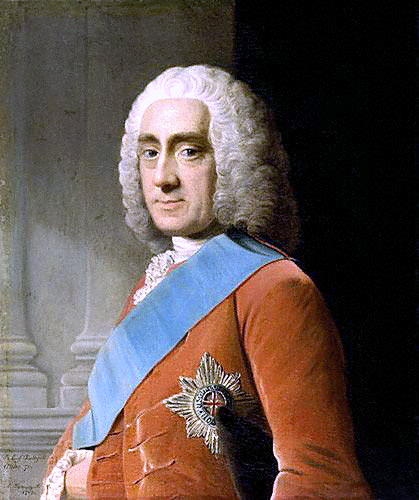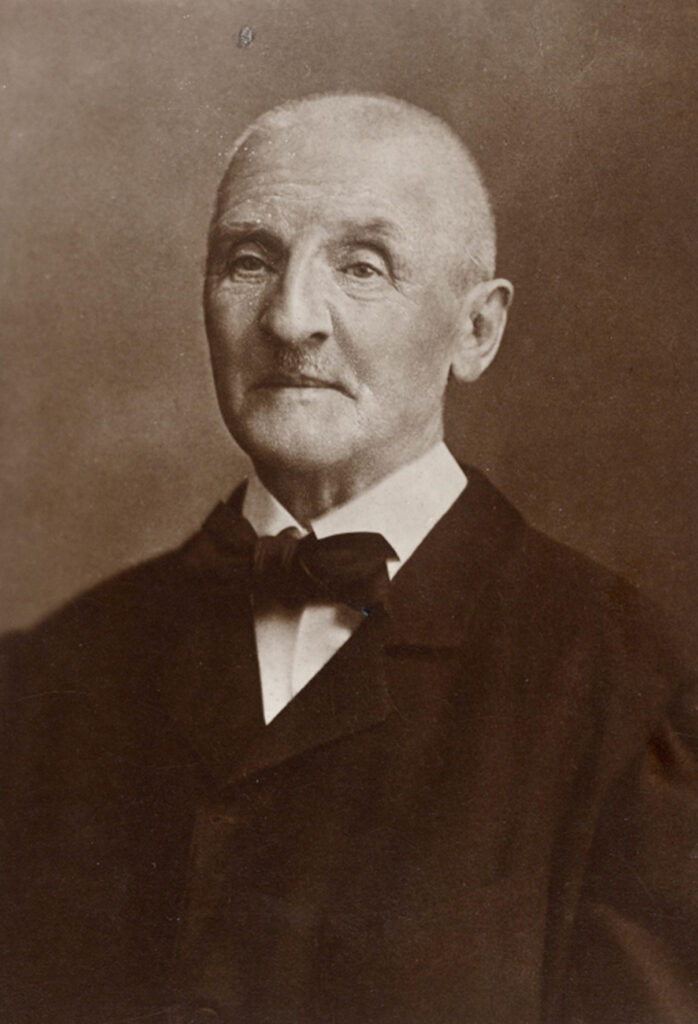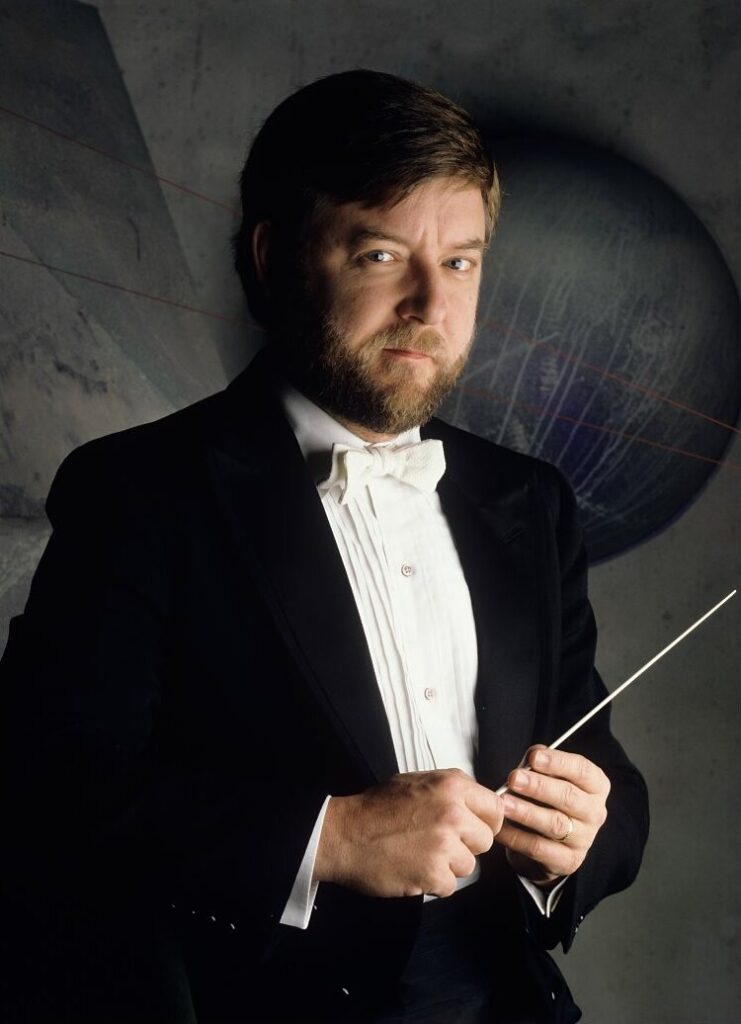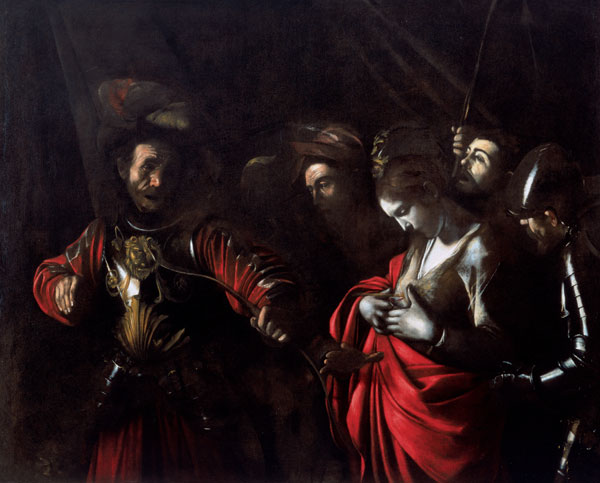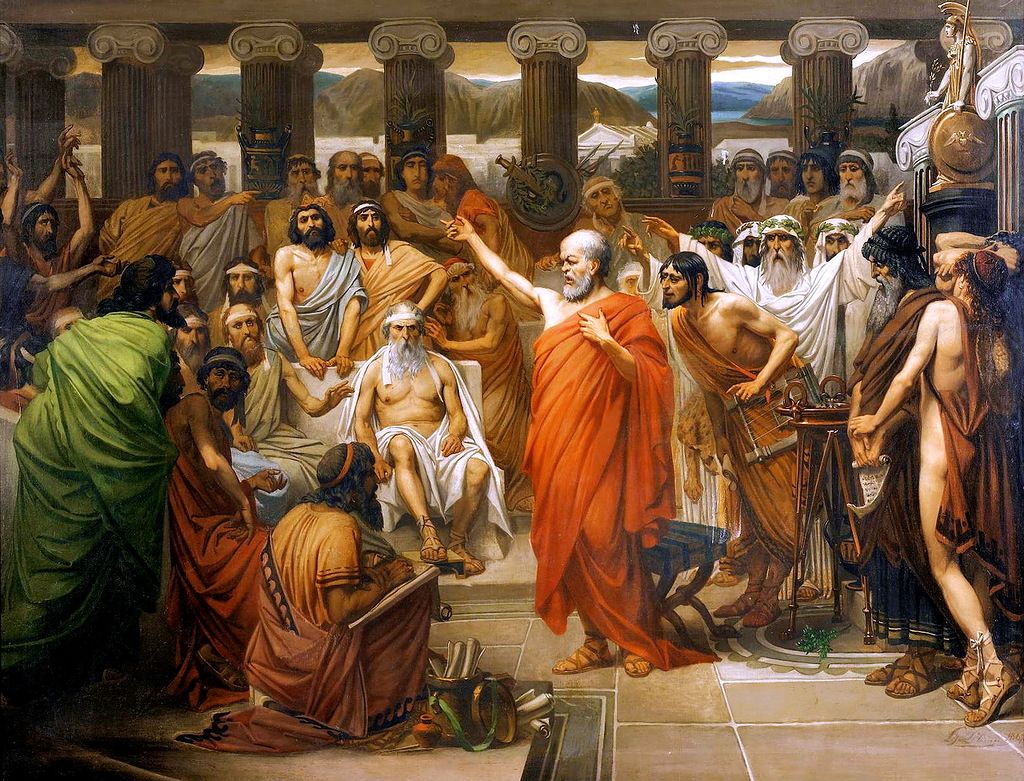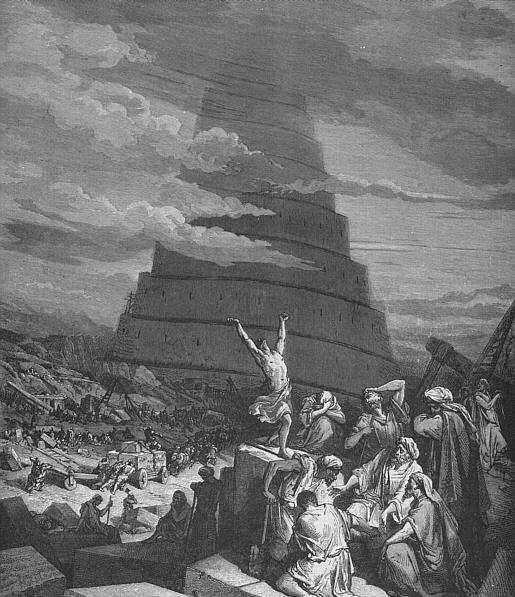
Statue of Coatlicue, credit Wikipedia
A Conspiracy to Silence and Control
By Dr A. R. Kneen
Questioning the official narrative on a topic is often met with sneers such as: ‘you sound like a conspiracy theorist’; ‘I don’t listen to conspiracy theories’, and the like. The tone is somewhat superior and the inflection such as to demean the critic. The effect is to close the discussion. Not only is the debate closed, but it appears as though evocation of the term ‘conspiracy theory’ can also close down the thinking processes of those that invoke it. In this sense, the term ‘conspiracy theory’ is a ‘blocker-term’: these are terms that block debate – and that also possibly block cognition. This parallels the effects of other terms, such as ‘racism’ – which has the effect of closing debate upon certain race-related topics[1].
Sometimes what was dismissed as a ‘conspiracy theory’ is subsequently shown to be true. For example, it used to be denied that mass immigration could result in white indigenous British people becoming the minority in any British city. People who predicted this as a possible outcome were demeaned as ‘conspiracy theorists’. However, in many areas of Britain, White Brits are now a minority. According to the 2021 census, White British people constituted 36.8% of the population of London. This example illustrates one of the key features of the term ‘conspiracy theory’[2]: that by describing a statement as a ‘conspiracy theory’, it is thus implied that the statement is untrue[3] (it is ‘false/fake news’, ‘misinformation’, ‘disinformation’, etc.). Apropos ‘conspiracy theory’ as a blocker-term, Social Representation Theory[4] examines the actual meaning of terms in their social context – what terms represent socially to people.
If one looks up the term ‘conspiracy theory’ in a dictionary, one finds definitions such as:
‘a belief or statement that an event or situation is the result of a secret plan made by a small and powerful group of people’.
Clearly this definition does not always even fit the context in which the term is used. For example, during 2020, the official narrative was that the hospitals were ‘over-flowing’. Many people knew this to be untrue[5] – and also knew that the Nightingale hospitals were unused[6]. In 2020, the author went to a local hospital to check and saw that it was extraordinarily quiet; but stating this fact was met with the ‘conspiracy theorist’ accusation. How would stating that the hospital was quiet necessarily pertain to a secret plan by a small group of powerful people? It is merely a true and observed fact – albeit a fact that contradicts the official narrative. Likewise with the example above of indigenous Brits becoming a minority in a British city: this statement at no point refers to any small group of powerful people planning anything. Of course, any event could be planned by such a group, but there could be many other possible explanations for any of these events. And whether such events are or are not so-planned, this was not stated by the speaker nor is it a necessary conclusion from the fact stated. Moreover, if any such events were planned by a small secret group, then this should not mean that the debate necessarily should be over – surely that would, if anything, make it more important to continue the discussion. And, really, many important events are planned by small groups of people – why would that even be an issue? So not only is such a matter a non sequitur and irrelevant to the veracity of the statement, it is also unclear why this non sequitur would then block debate (and possibly also block cognition).
Although the usage of the term ‘conspiracy theorist’ frequently does not fit its dictionary definition, the social representation meaning of the term presents various constituent elements of what this term means to those using it. One such element is that the statement is untrue (see above). Another element is that the ‘conspiracy theorist’ is ‘inferior’ – this is demonstrated by the pseudo-superior tone frequently used by the accusers and the sneering and demeaning of the accused. ‘Conspiracy theorists’ are also, perhaps ironically, considered as having lower mental abilities, as being less educated and/or less well-informed. The central visual image of the term appears to be that of a weird, unintelligent, uneducated, mentally ill, undesirable, social-outcast ‘in his mother’s basement’ – possibly wearing a ‘tin foil hat’. The ‘conspiracy theories’ he/she states are false and crazy – not worthy of considering and to be blocked without further thought. Such stereotypes are discussed by Moscovici, e.g.:
Psychological processes, either cognitive or affective, that can establish as immediate connection between the stimulus and the response, must result in the production of a stereotype[7]. This is not only because individuals immediately behave as they are required to, but also because the situation is so designed as to offer only two possible solutions. (Moscovici, 2008)[8]
The two solutions that appear to be offered are to either: block the statement made by the ‘conspiracy theorist’ and hence stay comfortably with the official narrative and feeling smug, superior and safe; or to consider what was stated and then be viewed as a weird, crazy ‘conspiracy theorist’ – as well as the identity issues this presents, this can also present various potential risks (see later). By drawing upon Social Representation Theory, one can ascertain how such images have substituted logical concepts in thinking, in what has been described as ‘ritual-authoritarian language’.
This style is of overwhelming concreteness. The ‘thing identified with its function’ is more real than the thing distinguished from its function […] This language, which constantly imposes images, militates against the development and expression of concepts. In its immediacy and directness, it impedes conceptual thinking; thus it impedes thinking (Marcuse, 1964 [9])
Hence, Social Representation Theory helps us understand how this blocker-term has the effect that it does: most people will not want to align themselves with such an image – it is perceived as undesirable and risky. It also goes some way to explaining why this blocker-term does not affect everyone in the same manner. As Moscovici wrote:
One often wonders why people are so cavalier about validating their judgements, so forgetful of statistical rules, and so unconcerned about correcting their mistakes. It would seem less peculiar if one looked at people not only as biological organisms but also as social organisms. The question arises in what sort of universe dilemmas are formulated and what is the position in this universe of the people who must resolve them. (Moscovici, 1988)
People who use the term ‘conspiracy theorist’ appear to believe the official narrative on the relevant topic. Many beliefs held by people are what are referred to as ‘motivated-beliefs’: these beliefs are not accidental but people are motivated to believe them. But as Moscovici maintains, we are all in different positions. Incentives for people to believe can be financial. For example, some doctors and nurses have made large amounts of money from the corona virus situation. NHS staff have also benefited financially from the ‘NHS discounts’ given by retailers[10]. Indeed, NHS staff are still going into retailers and requesting such a discount [11] – the author has a friend who runs a coffee shop and NHS staff still come in asking for a ‘NHS discount’[12].
There are reports of some NHS staff receiving huge amounts of money during the ‘pandemic period’: four GPs are reported to have been paid over a million pounds a year[13]; some nurses in America were reported to have been paid $10,000.00 a week while they were put up in hotels ‘waiting to be deployed for covid’; a number of GPs in England made small fortunes injecting people[14] as bonus payments were made in the UK per injection given (even though these were conducted during normal hours for which the medics were already being paid); hospitals in America were paid thousands of dollars for each patient they diagnosed with alleged ‘covid’; etc. Such financial benefits would provide an incentive for many not to query the official narrative [15]. Of course, there will be those who will doubt the official narrative, or actually totally disbelieve it, yet keep quiet and take the money. This would represent examples of corrupt, ‘bribed silence’ rather than incentivised-belief[16]. For others, they may genuinely believe every word of the official narrative, but this belief is motivated, albeit likely to be unconsciously so, by the money.
Examining the reverse can illuminate this process further. For example, the owners of a hypothetical small family business that was ordered to close down for lockdown, and hence got into serious financial difficulties, might be inclined to query the narrative and to thence investigate and research the alleged facts behind it. They then might discover that there is no isolate of the alleged sars cov 2 virus. Such research could cause the researchers to doubt the official narrative. This would be an example of ‘motivated-disbelief’. In other words, a person’s circumstances might motivate them to believe unthinkingly – or alternatively, to doubt, to apply critical thinking – and perhaps to research.
Motivations for belief are not merely financial. People’s character and social circumstances, inter alia, are also relevant in this regard. Drawing on the past four years, as an example, there was ample opportunity to mistreat and control[17] others. There are examples of ‘covid authoritarians’ who behaved in a terrible manner towards those not following the official narrative and/or who were not complying with the rules. Aside from the police, others also engaged in controlling, authoritarian, and often abusive behaviour – we witnessed people screaming at others in the street for not wearing face masks, there were calls on social media and television for draconian measures for those not complying with orders, etc. The desire to mistreat and otherwise control others is present in some people, and following the official narrative gave them an excuse not only to inflict pain on others, but to feel superior about so doing. As Aldous Huxley memorably said:
The surest way to work up a crusade in favour of some good cause is to promise people they will have a chance of maltreating someone. To be able to destroy with good conscience, to be able to behave badly and call your bad behaviour ‘righteous indignation’ – this is the height of psychological luxury, the most delicious of moral treats.
Another factor that can affect the level to which a person is motivated to believe the official narrative is the degree to which a person feels the need to align with the people and organisations (and their related images) presenting that narrative. For example, there are those who seem to feel the need to try to enhance their apparent status (or ‘pseudo-status’) by so doing. The very fact of sneering suggests that there is something other than the facts of the matter relevant to the sneerer[18] – in some ways, the act of sneering can be viewed as an attempt to gain status (or faux status). Another relevant factor is the extent to which an individual has already committed themselves to such organisations and behaviours. Again, with all these factors, the extent to which they are conscious or not varies[19].
The official narrative is presented as not only correct, but also as being held by the majority. Various means are used to convince people that this view is held by most people, (e.g. presentation of survey results, lack of contradictory views presented to people, etc.) – and once people are convinced that a certain narrative is the general consensus, then this can act as a self-fulfilling prophecy. People display different levels of conformity to what appears the majority view. In Asch’s[20] famous experiments, a group were shown a single line and also shown a set of 3 lines and asked, in turn, which line of the set of 3 was the same length as the sole line. Of the group, unbeknown to the actual subject, all were confederates of the experimenter. It was found that many people agreed with the responses previously given by others (confederates) – even though the answers were clearly incorrect. Of course, in any such experiments one could never be sure that the subject’s actual judgement had been affected or whether he just agreed, knowing the answer was incorrect, for other reasons, (e.g. just to be polite and not contradict others, etc.).
Asch also found that if one confederate dissented from the majority view prior to the subject being asked, exposure to this dissent reduced ‘conformity’ rates (hence a reason to censor dissent). He noted that conformity was higher if the confederates were perceived as higher status (see ‘plebism’) – and that some subjects never conformed and always merely gave the correct answer. There are many other such experiments that show that people will conform to what they believe to be the majority view[21]. In 2020, during lockdown, the author was discussing the lockdown situation with someone who accepted the official narrative. At one point, the individual in question said: ‘but all the countries in the world, the whole world, the whole world and all those governments, they can’t all be wrong, it has to all be true’[22]. This phenomenon is labelled ‘the weight-of-numbers’ effect[23]. However, the latter does not influence everyone. Some people have independence of mind – perhaps related to strength, lack of faith in the abilities of others, personal confidence and grounding[24], lack of deference (see ‘plebism’ qv), etc.
The concept of authority is relevant in this context. There are two main groups of definitions of this term: those referring to ‘authority’ as being the moral or legal right to control others; and those referring to the idea of being an expert on a particular subject. In regard to legal rights to control others, laws vary across time and location. For example: substances such as alcohol and/or cannabis might or might not be legal depending where one lives today; sometimes it has been legal to own slaves, and still is in some places today.
It can be argued that there is a moral obligation to disobey and to challenge immoral laws. This point could also be extended to laws that are grounded on falsehoods or irrelevance. Regarding a moral right to control others – it is not clear what moral right anyone has to control others. Of course, there are exceptions to this, e.g.: if one were to see a toddler about to walk off a cliff, it would be imperative to pull them away; if a man were trying to rape a woman, it would be proper for her to stop him, etc. All such examples would involve the immediate controlling of other people in some fashion. And there are other types of examples such as when two free people have agreed upon a contract between them – it would be right to enforce this contract (and to seek recompense were it breached, etc.). Some argue that it is moral to obey the government due to some imaginary ‘social contract’. However, there is a strong counterargument: that the very notion of government itself is actually immoral – as is obeying government[25]. Thus, it is clear that one should not necessarily obey the ‘authority’ – and that in some circumstances one should challenge and refuse to comply. The issue, if one wants to live ethically, is whether the orders are moral or not. Orders based on false-hoods (fraud, etc.) and that would cause more harm than good, etc. should not be followed – and any ‘authority’ giving such orders lacks credibility.
As to the idea of ‘experts’, some people are doubtless experts in their field. Nonetheless, in recent years we have witnessed many so-called experts giving incorrect advice. Maybe these ‘experts’ were corrupt, maybe they were mistaken, maybe they were incompetent. Certain fields of expertise are founded on falsehoods. It is possible that some ‘experts’ are unaware of this fact – high levels of compartmentalisation mean that many people might be working earnestly and honestly and not realise that what they are doing is incorrect. For example, within the field of virology, there are those who do not realise that the process they are using to ‘isolate’ a virus does not actually do so at all[26]. Or that the alleged genetic codes thus produced are not empirically-derived: these are merely in silico – produced by a computer. This error then has a knock-on effect; these codes are then passed on and used in testing. Those conducting and producing the resultant PCR tests might be unaware that the codes they were given to use are not derived from any isolated virus [27]. It is evidently not always advisable to listen to someone merely because he is deemed an expert.
However, despite the issues with authority, many people will comply with orders from authority figures merely because those figures are perceived as authority figures[28]. There is much research on this area[29], including the classic Milgram experiments[30] in which a majority of people were found to be prepared to administer what they believed to be dangerously high levels of electric shocks to another person (unbeknown to them, actually a confederate of the experimenter) when they believed this was part of an experiment conducted at a prestigious university. Interestingly, watching another person dissent reduced the levels of obedience. Repeating this experiment in a more run-down location instead of a prestigious university setting also decreased obedience. Demographic differences were found, such as educated subjects being less obedient and military subjects more obedient. Much could be said regarding the interpretation of the results of such experiments, and clearly obedience to authority is not the only relevant issue. However, the phenomenon of people obeying orders because they perceive the order-giver as having authority and/or prestige does happen.
What is interesting, inter alia, is why people would perceive the obligation to comply – and why they would perceive some people as having prestige. The results of some of the ‘obedience experiments’, and other matters, suggest various possible explanations. One of salient factors is ‘plebism’: the phenomenon whereby a person believes themselves to be inferior in some manner(s) to someone else and hence exhibits deference towards them. This is associated with a tendency to obey based on the belief in their own inferiority to the other person. This phenomenon was demonstrated during the past 4 years when people complied with the most ridiculous matters such as standing on yellow dots in shops, wearing masks (since declared as useless to protect against illness), etc. Some people appeared almost in awe of the people paraded on the televisions as experts and authority figures. Even when such figures are totally discredited, it seems to make little difference[31] – clearly those engaging in plebism are not considering their credibility.
The deference of plebism is found in all strata of society – this is not confined to those who are very poor and/or very uneducated, etc. In fact, there are middle-class people who exhibit plebism. When speaking with such people, it is often difficult to disentangle the extent to which their behaviour is plebism as opposed to a form of snobbery. The official narrative is usually presented as being socially superior – and constructed via various means that establish this. If a snob is defined as: ‘a person with an exaggerated respect for high social position and/or wealth who seeks to associate with social superiors and looks down on those regarded as socially inferior’, then it is possible that plebism is an explanation for the existence of snobbery. In fact, the very belief in the concept of authority could thus be, at least in part, explained thereby.
Plebism is also relevant in relation to the idea of following the ‘experts’ – or as we have been told recently, to ‘follow the science’. Using terms that are not understood by people mystifies and obscures. Of course, every field has its own jargon, and any such jargon could be learnt by most people if they took the time to do so. However, given the prestige of ‘science’, people often will unhesitatingly defer to these alleged experts.
An example of a related issue is that of cowardice: it is safer to adhere to the official narrative. The official narrative is that presented by the government, and the government has all the force at hand (police, army, prisons, etc.). Instinctively perhaps, and also perhaps unconsciously, some will want to align with this rather than against it, out of fear of disagreeing. This fear can also be caused by more open and direct threats by those in power. For example, there were those who lost their jobs in recent years for challenging the official narrative. That can also present direct risks in other ways: various laws and policies are in place that aim to prevent speech that challenges the official narrative. Sometimes these are wrapped up as being ‘nice’, e.g. various ‘hate speech laws’, etc. presenting the ‘smiley-tyranny’ with which we are all becoming familiar. Again, the new definition of ‘extremism’[32] implies links between dissent and terrorism – and provides means by which the government can inhibit dissent. Governments have repeatedly and directly told the public not to listen to ‘misinformation’ and ‘fake news’, etc. of the ‘conspiracy theorists’. As New Zealand Prime Minister Jacinda Ardern, a person with a big smile, said: ‘dismiss anything else, we will continue to be your single source of truth’[33].
In fact, police have even appealed for the public to report ‘conspiracy theorists’ to them. This is not a new phenomenon[34], for example in 1674 King Charles II made a proclamation[35] ‘To Refrain the Spreading of False News and Licentious Talking of Matters’ [36] and ‘penalties are to be inflicted upon all such as shall be found to be the spreaders of false news’ with ‘strict and exemplary punishments’. The King was concerned that people were talking about the possibility of him dissolving Parliament; which he then did (in 1681) – an early example of a ‘conspiracy theory’ not being false. King Charles II also commanded that people are to report on people who challenge the official narrative or they also would be punished. In another such proclamation he actually specified that hearers of such ‘bold and irreverent speech’ must report the speaker within 24 hours[37] or face punishment themselves[38]. Of course, tyrannical governments always inculcate a culture of snitching. As the Australian police said in a press conference in 2022[39]:
If anyone out there that knows of someone that might be showing concerning behaviour around conspiracy theories, anti-government, anti-police, conspiracy theories around covid-19 vaccinations as we’re seeing [inaudible 2 words], we want to know about that
Thus, there is, and has been in the past, the threat from those in power to those who dissent – and in modern times the term ‘conspiracy theorist’ often is used to refer to such dissenters.
The term ‘conspiracy theory’ with its social representation has not appeared in a vacuum: this has been constructed so as to present people with the bipolar choices discussed above. The two poles appear to be constructive of one another. Such dichotomous division was discussed by Moscovici e.g.
A further feature of all dichotomous divisions explains the mechanism that binds the themes together: anything that does not belong within one field must belong to the other. No theme can be shared by both because, if it were, the dichotomous division would disappear […] its dichotomous nature explains the concrete aspects of propaganda (Moscovici, 2008)
The image of the ‘conspiracy theorist’ has been ably constructed by the media. Conspiracy theorists are portrayed in films and stories and discussed on television. In many debates (on social media and television), someone will accuse another of being a ‘conspiracy theorist’ and frequently the so-accused will deny this and recoil from the term – parallel to accusations of ‘racism’. By this process, people are trained to avoid this accusation. In fact, parallel to any dissent to the official narrative about the undoubted benefits of diversity (yes, any diversity, to any extent, etc.) being prefixed with the denial of ‘racism’ (‘I am not ‘racist but…’), those challenging the official narrative on many topics prefix their own speech with ‘I am not a conspiracy theorist, but…’. The implied assumption to all such speech is that nobody wants to be labelled as a ‘conspiracy theorist’[40]. All these instances construct and bolster the image. Conversely, the official narrative is constructed by the ‘theatre’ of the titles, costumes, ‘status’, presentation and setting (e.g. podiums, etc.) and suchlike[41]. Motivational factors other than the image and perceived status are also constructed in the socio-cultural environment by matters such as the relevant laws instilling fear in people. However, despite this image, some still refuse to be silenced and controlled.
Those in power invariably discourage dissent. The term ‘conspiracy theorist’ is but one tool that is currently employed to this end. It is effective because it controls how people think. The application of this term, more often than not, is inversionist, i.e. the truth is actually the opposite of what is being claimed or portrayed.
ENDNOTES
[1] Although only to some ends, not others
[2] Not only does this provide an example of a so-called ‘conspiracy theory’ not being, as implied by the term, untrue, it also presents an example of various other phenomena that are relevant to many ‘conspiracy theories’ – including the phenomenon of ‘falsehood-erasure’. This term refers to the phenomenon whereby a person who previously dismissed a claim as merely a conspiracy theory appears to later forget what they had previously said, and they seem to act as though they had never said it. The sneerer’s previous falsehood is erased, e.g. ‘well that was always going to happen, and I celebrate the diversity’.
[3] Of course, not everything that challenges the official narrative on any topic is true, but the point being made here is that by deeming something as a conspiracy theory, it is implied it is thus false – whereas in fact many statements so-labelled are not false
[4] See Moscovici and Duveen. For example: DUVEEN, G. and LLOYD, B. (1990) Social Representations and the Development of Knowledge. Cambridge University Press. MOSCOVICI, S. (2000) Social Representations: Explorations in Social Psychology. Translated by G. Duveen. Polity Press. MOSCOVICI, S. (1985) The Age of The Crowd: A Historical Treaty on Mass Psychology. Cambridge University Press. MOSCOVICI, S. (1988) Notes Towards a Description of Social Representations. European Journal of Social Psychology, 18, 211-259.
[5] Around the world people were going in to their local hospitals and filming them – evidencing that they were quiet and not ‘over-flowing’. Many such videos were posted on Twitter #filmyourhospital (and also on other social media platforms)
[6]NEC confirms reopening as NHS Nightingale decommissioned | TheBusinessDesk.com
[7] See also Driencourt, DRIENCOURT, J. (1950) La Propagande, Nouvelle Force Politique. Armand Colin: Paris.
[8] See also Kris and Leites, 1947 KRIS, E. and LEITES, N. (1965) Trends in Twentieth Century Propaganda (pages 489-500). In The Process and Effects of Mass CommunicationW. Schramm (editor). Urbana: University of Illinois Press. First published 1947.
[9] MARCUSE, H. (1964) One-Dimensional Man. Beacon Press: Boston.
[10] E.g. 20% off at MacDonalds, 10% off at many supermarkets, 60% and more off many retailers, etc.
[11] Many NHS discounts are still running 4 years later, although many have now ceased.
Top 30 NHS Discounts deals at NHS Staff Benefits – NHS Staff Benefits
[12] Which he refuses to give
[13] Four GPs paid £1m a year during Covid, NHS figures reveal (msn.com)
[14] Extra payments were given for each injection administered varying from £12.58 to £30. A bonus on top of that of £10 per shot was available if it was a child jabbed. This added a substantial income to many, already generous, salaries. e.g. some surgeries reported injecting over 80 people an hour. If they were receiving £15 per shot, then this would mean an extra income of £1.200.00 per hour (i.e. 80 x £15 = £1,200.00)
My GP practice vaccinated 900 patients in a day – but it’s only the start | Zara Aziz | The Guardian 900 a day at £15 each would have meant an extra £13,500.00 a day.
[15] This defence including silencing those who might challenge the official narrative in any way
[16] And of course, the fact that querying might cost someone their job (and did on many occasions) is another finance-related motivation not to be ignored.
[17] Controlling others without due cause is considered as a form of mistreatment
[18] For example, if someone merely disagreed on the plain facts, there would be no need to sneer – sneering implies that the sneerer is trying to belittle others and perhaps hence increase his perceived prestige in some manner and/or is unable to refute or consider the point being made, etc. The very act of sneering shows something distasteful about the person who sneers.
[19] There are so many other characteristics of the individual that are relevant here and those presented in this article do not constitute a complete list. Other factors include: the level of intelligence; the level of naiveté; the extent to which a person engages in critical thought; a person’s level of knowledge on any relevant topic; how discerning a person is; a person’s level of independent thought; etc.
[20] ASCH, S. E. (1951) Effects of Group Pressure Upon Modification and Distortions of Judgements. In H. Guetzkow, Groups, Leadership and Men. Carnigie Press: Pittsburg.
ASCH, S. E. (1956) Studies on Independence and Conformity: a Minority of One Against an Unanimous Majority, Psychological Monographs, 70, 1-70.
[21] For further reading see for example:
Crutchfield, R. S. (1955) Conformity and Character, American Psychologist, 10 191-8
Sherif (1936) The Psychology of Social Norms. New York: Harper and Row
Stoner, J. A. F. (1968) A Comparison of Individual and Group Decisions Involving Risk. MIT thesis
[22] This discussion was very long, only a snippet is presented here. However, it really did appear that the weight-of-numbers was a major factor in this man’s mind.
[23] This also can be seen with the ‘climate change/boiling/emergency’ official narrative. For example, often people are shown a large hall full of people all nodding, clapping, etc. as speakers on the stage at the front make various declarations about the climate. The sheer weight of numbers makes it hard for many to believe that all these people could be wrong. The theatre is also set by the perceived status of the speakers, etc. qv
Then the weight-of-numbers is increased further by many news items showing more people confirming the official narrative – and also phenomenon such as ‘bolstering-by-stacking’ whereby the official narrative is bolstered by the process of stacking other issues on top of it – other issues that imply the correctness of the official narrative by accepting it as true by implication. For example, bolstering-by-stacking is seen when people debate how is the best means to reduce carbon dioxide – this implying that reducing carbon dioxide is required.
[24] The below the surface hysteria of many ungrounded people renders them susceptible to manipulation by fear and security, etc. Such ‘hysterics’ frequently have a very narrow focus of thought – perhaps due to their hysterical nature – and this can be used to control them by those in power
[25] For example, see: Rose, L. (2012) The Most Dangerous Superstition, Larken Rose; 2nd edition (16 Jan. 2012)
[26] This will be expanded upon in a forthcoming article in The Quarterly Review
[27] This point is also relevant to the variation of the sneering: sometimes the sneerers state matters such as ‘are you claiming that millions of people are involved in a conspiracy?’. For there to be ‘millions’ of people doing the wrong thing does not mean that millions of people are involved in a conspiracy
[28] Factors such as level of courage, etc. are relevant. It is likely that the fear of power affects people differentially – and thus matters such as those described as Stockholm Syndrome, appeasement, etc. have effects in this regard too
[29] Of course, the interpretations of the results are a matter for debate
[30] E.g. see: Milgram, S. (1974) Obedience to Authority. New York: Harper and Row, Milgram, S. (1963) Behavioural Study of Obedience. Journal of Abnormal and Social Psychology, 67, 371-8
Also see: Hofling, K. C. et al (1966) An Experimental Study in the Nurse-Physician Relationship Journal of Mental and Nervous Disorders, 43, 171-8
[31] For example, then Prime Minister Boris Johnson was caught having late night parties as he told the nation to ‘lockdown’ due to an alleged threat to their lives from a virus. Apparently he and his protection teams did not believe what he was saying (i.e. the official narrative). In fact, many of the figureheads for the lockdowns, etc. have been exposed as acting in a manner that demonstrates they did not believe the official narrative
[32] Can of Worms – The Quarterly ReviewThe Quarterly Review (quarterly-review.org)
[33] Is the State Your Single Source of Truth? | AIER
[34] Also see: Fake news has a long history. Beware the state being keeper of ‘the truth’ | Kenan Malik | The Guardian
[35] And much earlier similar proclamations can also be found e.g. from the 1275 Statute of Westminster ‘slanderous news’ from which ‘discord may arise’ is forbidden.
[36] A proclamation to restrain the spreading of false news, … 1674 : CHARLES 11. : Free Download, Borrow, and Streaming : Internet Archive
[37] Relatedly, see: Germany approves plans to fine social media firms up to €50m | Technology | The Guardian
[38] He also shut-down (‘locked-down’) coffee shops to prevent people talking
[39] If You See Anyone Posting “Anti-Govt, Anti-Police, COVID Conspiracy Rhetoric” … Call Crime Stoppers (bitchute.com)
[40] As with ‘racist’, the term ‘conspiracy theorist’ largely goes undefined – defining such blocking-terms would render their usage less useful for those attempting to close down debate
[41] The ‘theatre’ includes the image-construction as caring, wise, correct, etc. And many fall for this image, e.g. people will say things like ‘the government wouldn’t do that’ if it is suggested that the government might be involved in some wrong-doing
AR Kneen was awarded a Bye-Fellowship at Magdalene College, Cambridge. She is the author of Multiculturalism – What Does it Mean?


